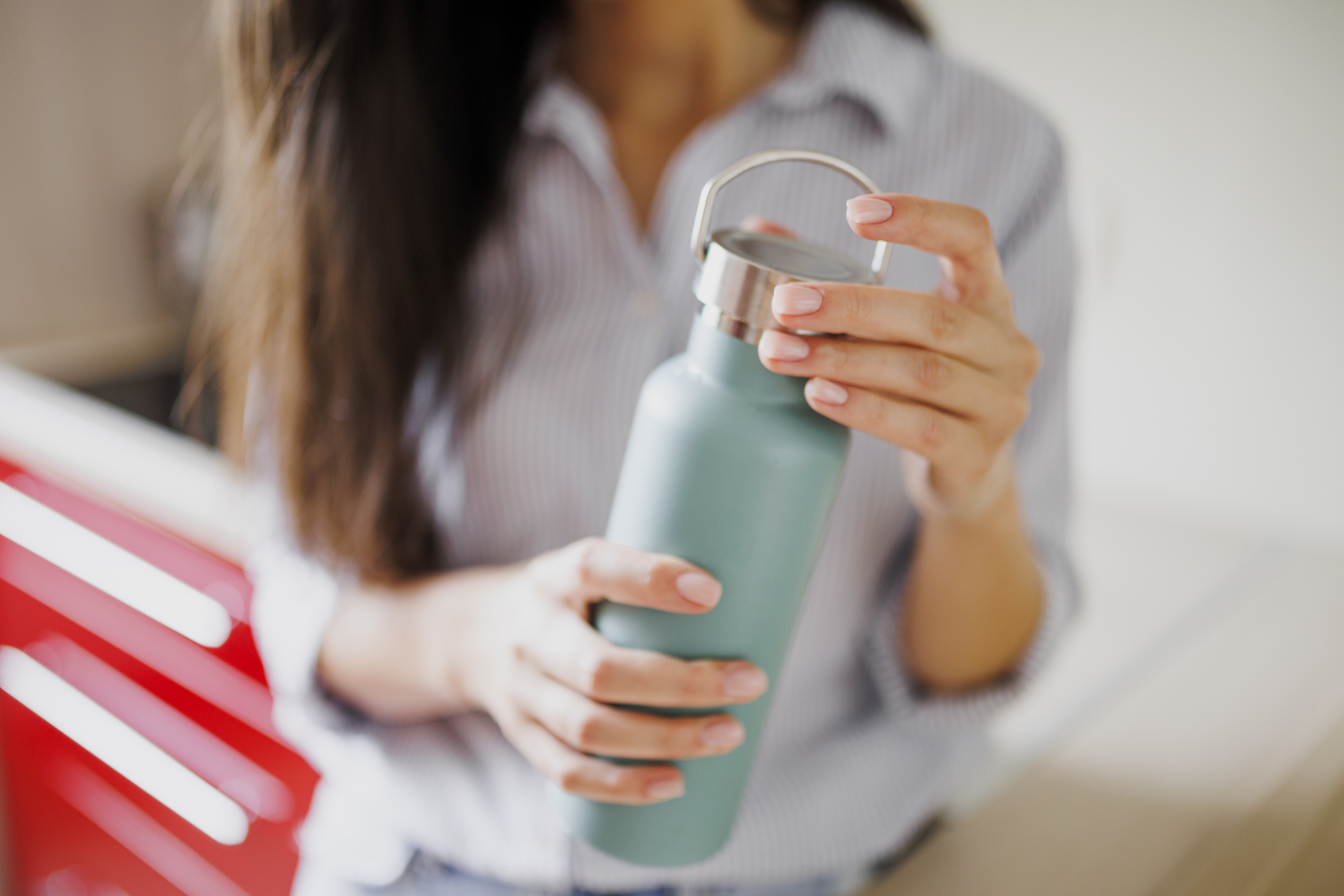

I’ll be the first to admit that I’m a fanatic when it comes to drinking enough water daily.
After all, water is a building block your body needs to keep away aches and pains and prevent foggy thinking and brain aging.
And now that I’ve hit the perimenopausal years, it’s a must to keep bladder infections away.
That’s why I keep my reusable water bottle close at hand. It’s not only convenient but great for helping keep track of just how much water I’m drinking.
However, according to a report by the Cleveland Clinic, if we’re not careful about how we’re using them, they can lead to sickness instead of wellness…
When’s the last time you really washed your water bottle?
According to Marianne Sumego, MD, a primary care physician with Cleveland Clinic, “Everything that touches our reusable water bottles can transmit bacteria. We put our mouth to the water bottle, we lift the straw, we set it down — so bacteria can be transferred from any contact that’s made.”
And thanks to the moist environment a water bottle creates, bacteria and molds can thrive.
Unfortunately, these bacteria and molds tend to be invisible to the human eye. So while you don’t even know they’re there, they can be damaging your health on a daily basis.
Those bacteria can result in symptoms similar to food poisoning. And the mold growing in your water bottle can cause flare-up of allergy symptoms.
Take Lauren Garkow, a Los Angeles-based medical student, for example, who discovered that the recurrent throat problems she had been living with were due to a buildup of mold in her water bottle.
“I noticed there seemed to be a film on the inside, so I got a paper towel to scrub it and then noticed the mold,” said Garkow. “I made sure to scrub all the way to the bottom, and the whole inside of the bottom was a molded film.”
Thankfully, once the mold in her bottle disappeared, so did her throat issues.
“The biggest misconception [about reusable water bottles] is that they’re really safer than they are,” said Sumego. “Folks feel like they can’t get sick from them, and they forget that it’s a drinking source – like every other glass we use.”
Keeping your water bottle clean
Because, as Sumego reminds us, “The amount of bacteria that can collect on your water bottle is often more bacteria than there might be in your kitchen sink and other surfaces that we regularly recognize as being dirty,” — it’s important to do more than simply rinse out your bottle.
Instead to get rid of the germs and mold that can infest your bottle:
- Scrub all of the tiny nooks and crannies that make up your bottle with both soap and hot water using a wire brush. This includes all of the removable pieces. This should be done at least every day, if not between each use.
- Keep more than one water bottle on hand so that you have a backup if you don’t have time to for a thorough cleaning.
- Stick with glass or stainless steel bottles since it’s harder for bacteria to stick to their surfaces. Stainless steel is best if you have allergies because a buildup of mold is less likely.
- Consider putting your water bottle in the dishwasher rather than hand washing since the high temperatures help to kill off bacteria and mold.
Sources:
Can your Reusable Water Bottle make you Sick? — Cleveland Clinic
Your Water Bottle Could Be Germier Than Your Kitchen Sink — WebMD

